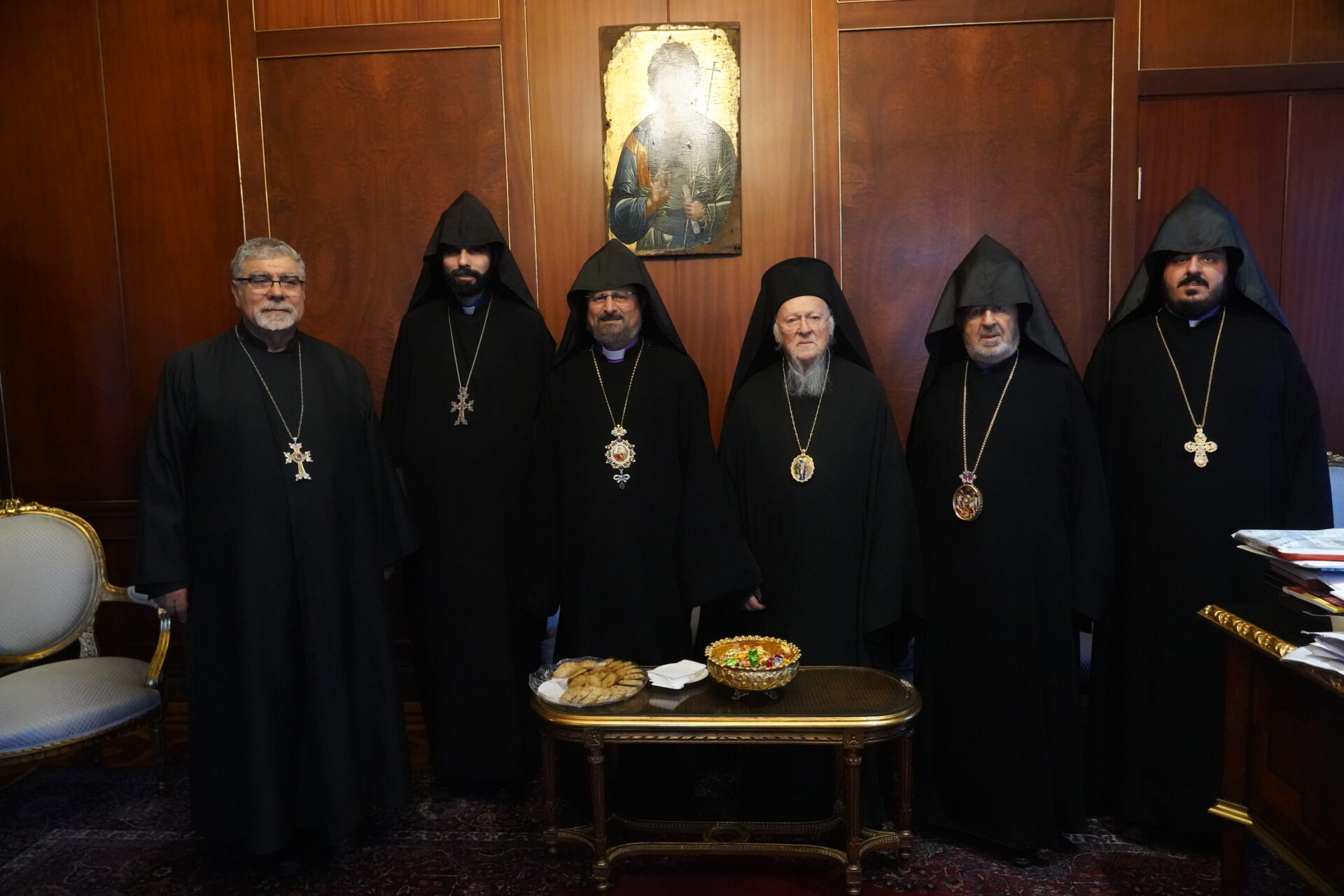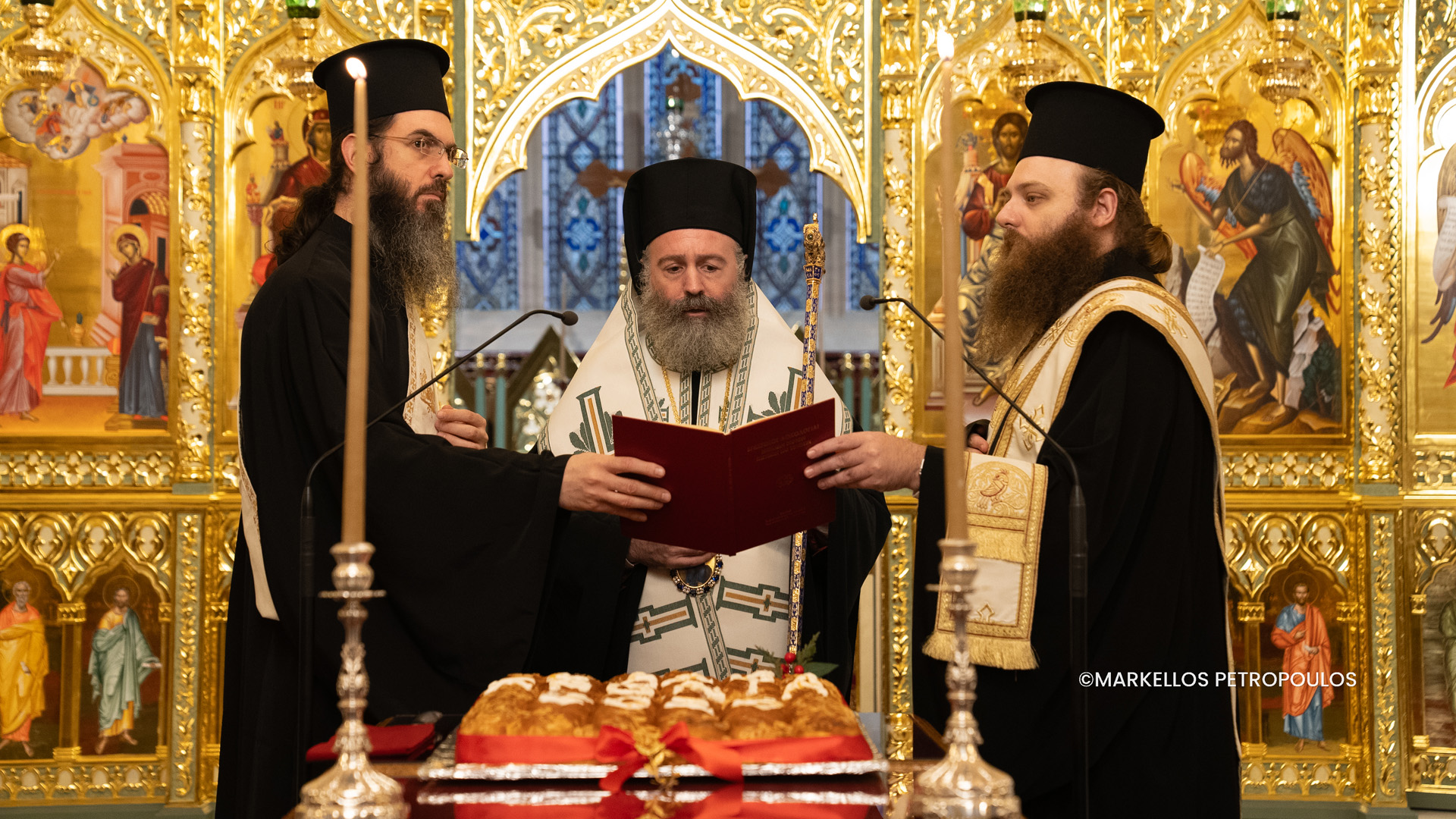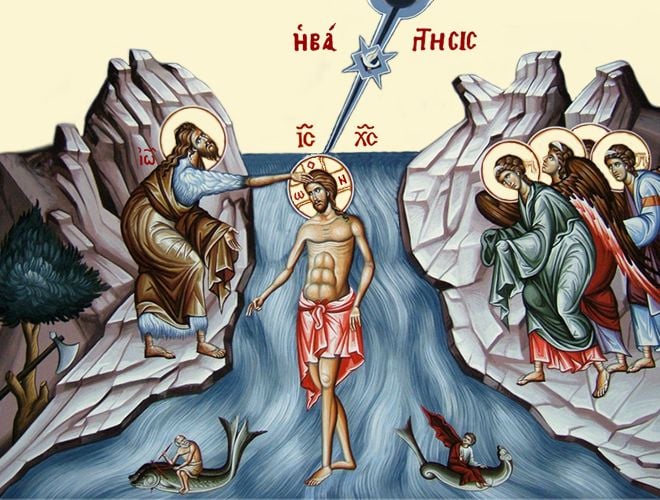Hieromartyr Dionysius the Areopagite, Bishop of Athens (3 October)
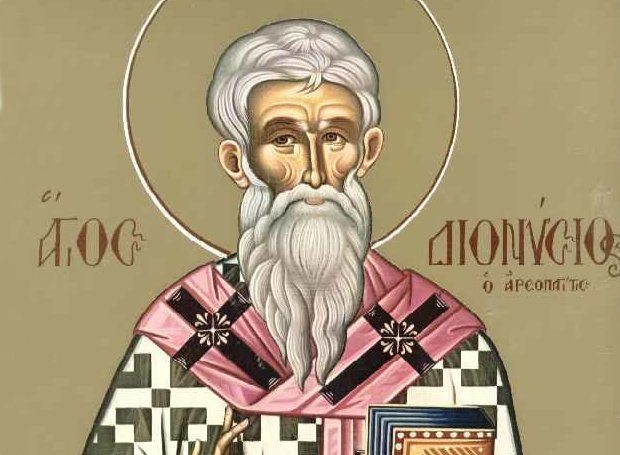

Saint Dionysius lived originally in the city of Athens. He was raised there and received a classical Greek education. He then went to Egypt, where he studied astronomy at the city of Heliopolis. It was in Heliopolis, along with his friend Apollophonos where he witnessed the solar eclipse that occurred at the moment of the death of the Lord Jesus Christ by Crucifixion. “Either the Creator of all the world now suffers, or this visible world is coming to an end,” Dionysius said. Upon his return to Athens from Egypt, he was chosen to be a member of the Areopagus Council (Athenian high court).
When the holy Apostle Paul preached at the place on the Hill of Ares (Acts 17:16-34), Dionysius accepted his salvific proclamation and became a Christian. For three years Saint Dionysius remained a companion of the holy Apostle Paul in preaching the Word of God. Later on, the Apostle Paul selected him as bishop of the city of Athens. And in the year 57 Saint Dionysius was present at the repose of the Most Holy Theotokos.
During the lifetime of the Mother of God, Saint Dionysius had journeyed from Athens to Jerusalem to meet Her. He wrote to his teacher the Apostle Paul: “I witness by God, that besides the very God Himself, there is nothing else filled with such divine power and grace. No one can fully comprehend what I saw. I confess before God: when I was with John, who shone among the Apostles like the sun in the sky, when I was brought before the countenance of the Most Holy Virgin, I experienced an inexpressible sensation. Before me gleamed a sort of divine radiance which transfixed my spirit. I perceived the fragrance of indescribable aromas and was filled with such delight that my very body became faint, and my spirit could hardly endure these signs and marks of eternal majesty and heavenly power. The grace from her overwhelmed my heart and shook my very spirit. If I did not have in mind your instruction, I should have mistaken Her for the very God. It is impossible to stand before greater blessedness than this which I beheld.”
After the death of the Apostle Paul, Saint Dionysius wanted to continue with his work, and therefore went off preaching in the West, accompanied by the Presbyter Rusticus and Deacon Eleutherius. They converted many to Christ at Rome, and then in Germany, and then in Spain. In Gaul, during a persecution against Christians by the pagan authorities, all three confessors were arrested and thrown into prison. By night Saint Dionysius celebrated the Divine Liturgy with angels of the Lord. In the morning the martyrs were beheaded. According to an old tradition, Saint Dionysius took up his head, proceeded with it to the church and fell down dead there. A pious woman named Catulla buried the relics of the saint.
The writings of Saint Dionysius the Areopagite hold great significance for the Orthodox Church. Four books of his have survived to the present day:
On the Celestial Hierarchy
On the Ecclesiastical Hierarchy
On the Names of God
On Mystical Theology
In additional, there are ten letters to various people.
The book On the Celestial Hierarchies was written actually in one of the countries of Western Europe, where Saint Dionysius was preaching. In it he speaks of the Christian teaching about the angelic world. The angelic (or Celestial-Heavenly) hierarchy comprises the nine angelic Ranks:
Seraphim
Cherubim
Thrones
Dominions
Powers
Authorities
Principalities
Archangels
Angels
The purpose of the divinely-established Angelic Hierarchy is the ascent towards godliness through purification, enlightenment and perfection. The highest ranks are bearers of divine light and divine life for the lower ranks. And not only are the sentient, bodiless angelic hosts included in the spiritual light-bearing hierarchy, but also the human race, created anew and sanctified in the Church of Christ.
The book of Saint Dionysius On the Ecclesiastical Hierarchies is a continuation of his book On the Celestial Hierarchies. The Church of Christ, like the Angelic ranks, in its universal service is set upon the foundation of priestly principles established by God.
In the earthly world, for the children of the Church, divine grace comes down indescribably in the holy Mysteries of the Church, which are spiritual in nature, though perceptible to the senses in form. Few, even among the holy ascetics, were able to behold with their earthly eyes the fiery vision of the Holy Mysteries of God. But outside of the Church’s sacraments, outside of Baptism and the Eucharist, the light-bearing saving grace of God is not found, neither is divine knowledge nor theosis (deification).
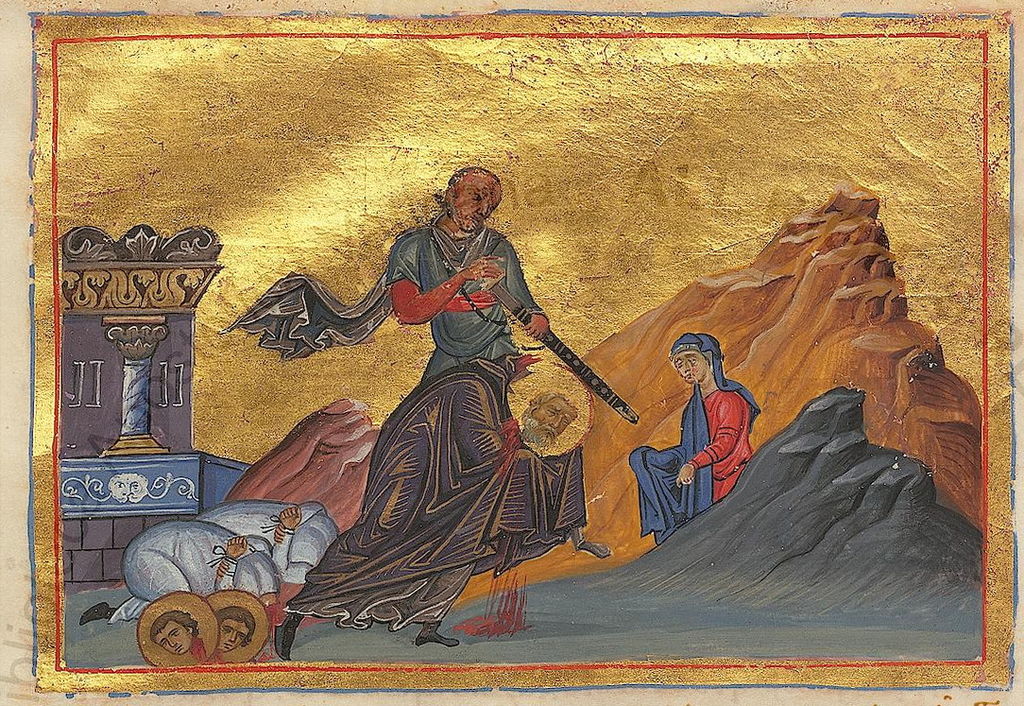

The book On the Names of God expounds upon the way of divine knowledge through a progression of the Divine Names.
Saint Dionysius’ book On Mystical Theology also sets forth the teaching about divine knowledge. The theology of the Orthodox Church is totally based upon experience of divine knowledge. In order to know God it is necessary to be in proximity to Him, to have come near to Him in some measure, so as to attain communion with God and deification (theosis). This condition is accomplished through prayer. This is not because prayer in itself brings us close to the incomprehensible God, but rather that the purity of heart in true prayer brings us closer to God.
The written works of Saint Dionysius the Areopagite are of extraordinary significance in the theology of the Orthodox Church, and also for late Medieval Western theology. For almost four centuries, until the beginning of the sixth century, the works of this holy Father of the Church were preserved in an obscure manuscript tradition, primarily by theologians of the Alexandrian Church. The concepts in these works were known and utilized by Clement of Alexandria, Origen, Dionysius the Great, pre-eminent figures of the catechetical school in Alexandria, and also by Saint Gregory the Theologian. Saint Dionysius of Alexandria wrote to Saint Gregory the Theologian a Commentary on the “Areopagitum.” The works of Saint Dionysius the Areopagite received general Church recognition during the sixth-seventh centuries.
Particularly relevant are the Commentaries written by Saint Maximus the Confessor (January 21). (trans. note: although many scholars suggest that the “Areopagitum” was actually written by an anonymous sixth century figure who employed the common ancient device of piously borrowing an illustrious name, this in no way diminishes the profound theological significance of the works.)
In the Russian Orthodox Church the teachings of Saint Dionysius the Areopagite about the spiritual principles and deification were at first known through the writings of Saint John of Damascus (December 4). The first Slavonic translation of the “Areopagitum” was done on Mt. Athos in about the year 1371 by a monk named Isaiah. Copies of it were widely distributed in Russia. Many of them have been preserved to the present day in historic manuscript collections, among which is a parchment manuscript “Works of Saint Dionysius the Areopagite” belonging to Saint Cyprian, Metropolitan of Kiev and All Rus (September 16) in his own handwriting.
According to one tradition, he was killed at Lutetia (ancient name of Paris, France) in the year 96 during the persecution under the Roman emperor Dometian (81-96). Today most scholars and theologians believe that Saint Dionysius the Areopagite did not die in Gaul, and that Saint Dionysius (or Denys) of Paris is a different saint with the same name.
Saint Demetrius of Rostov says that the Hieromartyr Dionysius was beheaded in Athens, and that many miracles were worked at his grave.
This Saint was from Athens, a learned man, and a member of the famous judicial court of Mars Hill (in Greek Aeros Pagos, hence the name Areopagite (see Acts 17:19-34). When Saint Paul preached in Athens, he was one of the first there to believe in Christ, and, according to some, became the first bishop of that city. Others say — and this may be more probable–that he was the second Bishop of Athens, after Saint Hierotheus, whom Dionysios calls his friend and teacher “after Paul” (On the Divine Names, 3:2). With Saint Hierotheus he was also present at the Dormition of the most holy Theotokos; the Doxasticon of the Aposticha for the service of the Dormition is partly taken from a passage in Chapter III of On the Divine Names. According to ancient tradition, he received a martyr’s end (according to some, in Athens itself) about the year 96.
Dionysius is numbered among the Seventy Lesser Apostles. This wonderful man was the scion of a distinguished pagan family in Athens. Having completed the school of philosophy in Athens, he went to Egypt to study further. While he was there the Lord Christ died on the Cross, the sun was darkened, and there was darkness in Egypt for three hours. Then Dionysius cried out: “Either God the Creator of the world is suffering, or this world is coming to an end.” Returning to Athens, he married a woman named Damaris and had sons by her. He became a member of the highest court among the Greeks, the Areopagus, and thereafter he was known as the “Areopagite.”
When the Apostle Paul preached the Gospel in Athens, Dionysius was baptized with his entire household. Paul consecrated him Bishop of Athens. He left his wife, children and his position for the love of Christ. He traveled with Paul for a long time and met all the other apostles of Christ. He traveled to Jerusalem especially to see the Most-holy Theotokos, and described his encounter with her in one of his written works. He was present at the burial of the Holy and Most-pure One. When his teacher, St. Paul, suffered martyrdom, Dionysius also desired such a death for himself, and went to Gaul, with his presbyter Rusticus and the deacon Eleutherius, to preach the Gospel among the barbarians.
He suffered much but also succeeded much. By his labors many pagans were converted to the Christian Faith. Dionysius built a small church in Paris, where he celebrated the divine services.*) When he was ninety years old, he, Rusticus and Eleutherius were seized and tortured for Christ; then all three were beheaded. The severed head of St. Dionysius rolled a long distance, to the feet of Catula, a Christian, who honorably buried it with his body. Dionysius suffered during the reign of Dometian in the year 96 A.D. He wrote several famous works: on the Divine Names of God, on the Celestial and Ecclesiastical Hierarchies, on Mystical Theology, and on the Most-holy Theotokos.
Apolytikion of Dionysios the Areopagite
Fourth Tone
Since thou hadst been instructed in uprightness thoroughly and wast vigilant in all things, thou wast clothed with a good conscience as befitteth one holy. Thou didst draw from the Chosen Vessel ineffable mysteries; and having kept the Faith, thou didst finish a like course, O Hieromartyr Dionysios. Intercede with Christ God that our souls be saved.
Kontakion of Dionysios the Areopagite
Plagal of the Fourth Tone
In spirit, thou dist pass through Heaven’s gates, instructed by the great Apostle who attained to the third Heaven’s heights, and wast made rich in all knowledge of things beyond speech; and then thou, O Dionysios, didst illuminate them that slumbered in the darkness of their ignorance. Hence we all cry out: Rejoice, O universal Father.
Source: oca.org / goarch.org / westserbdio.org


